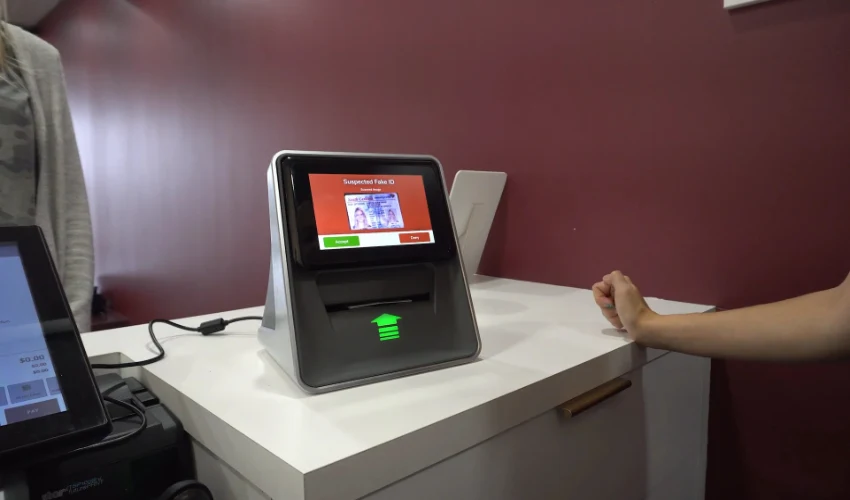Scannable ID has become an essential tool in today’s fast-paced digital world, helping individuals and businesses verify identity quickly and securely. Despite its growing popularity, many people still have questions about what scannable ID is, how it works, and its benefits. This article answers some of the most common questions about scannable ID to help you understand why it is becoming increasingly important in everyday life.
What Is Scannable ID?
Scannable ID refers to identification cards or documents embedded with digital codes, such as QR codes, barcodes, or NFC chips, that can be scanned electronically. These IDs store information in a format that can be read by compatible devices, enabling fast verification of identity. Unlike traditional ID cards that rely solely on physical features or manual inspection, scannable IDs provide instant access to accurate data.
How Does Scannable ID Work?
The technology behind scannable ID is designed to make identity verification efficient and secure. When scanned, the code on the ID communicates with a database or secure server, retrieving the relevant information such as the user’s name, date of birth, or membership details. The process is almost instantaneous, reducing the need for manual checking and paperwork. Many systems also use encryption to protect the stored data, ensuring that sensitive information remains secure during transmission.
Is Scannable ID Safe to Use?
Security is a common concern when it comes to digital identification. Scannable IDs are generally considered safe because they use encrypted data storage and secure transmission protocols. Most providers implement multiple layers of security, including authentication measures to prevent unauthorized access. However, users should ensure they only scan IDs using trusted devices and platforms to minimize the risk of data breaches.
Where Can Scannable ID Be Used?
Scannable IDs are versatile and used across various sectors. Businesses often use them for employee verification, customer check-ins, and loyalty programs. Educational institutions utilize them for student identification, library access, and exam authentication. Healthcare facilities may implement scannable IDs for patient identification and secure access to medical records. Government agencies also increasingly rely on scannable IDs for digital driver’s licenses and national identification cards.
What Are the Advantages of Scannable ID?
One of the biggest advantages of Scannable ID is convenience. Users can be identified quickly without carrying multiple documents or waiting for manual verification. It also improves accuracy since the digital data reduces the risk of human error. Scannable IDs enhance security by limiting access to sensitive information and tracking usage. Additionally, businesses and institutions benefit from streamlined operations, reduced paperwork, and faster service delivery.
Can Scannable ID Replace Traditional ID Cards?
While scannable ID offers numerous benefits, it may not fully replace traditional ID cards in all scenarios. Some situations still require physical verification or legal compliance that mandates a traditional ID. However, the trend is moving toward digital-first identification systems, especially in sectors where speed and convenience are crucial. Many organizations now issue hybrid IDs that combine physical cards with scannable technology.
How to Obtain a Scannable ID?
Obtaining a scannable ID typically depends on the issuing organization. Many companies, schools, and government agencies provide them to their employees, students, or citizens. The process often involves submitting identification documents, completing an application, and sometimes attending a verification session. Once issued, the scannable ID can be activated and used immediately for various purposes.
Are There Different Types of Scannable ID?
Yes, scannable IDs come in several formats. QR codes are common due to their simplicity and compatibility with smartphones. Barcodes are often used in retail or membership programs. Near Field Communication (NFC) chips offer advanced features, including contactless verification and integration with mobile wallets. The type of scannable ID chosen typically depends on the level of security required and the intended use case.
How to Ensure Your Scannable ID Works Properly?
Maintaining a scannable ID is straightforward. Keep it in good physical condition to avoid damage to the code or chip. Update any linked information promptly to ensure accurate verification. Always use the ID with trusted scanning devices and follow any guidelines provided by the issuing authority. By doing so, users can enjoy seamless functionality and reliable identification whenever needed.
Future of Scannable ID
The future of scannable ID looks promising, with continuous advancements in technology. Integration with mobile devices, biometric verification, and blockchain security are some innovations expected to enhance usability and trust. As digital systems become more prevalent, scannable IDs are likely to become standard for both personal and professional identification.
Conclusion
Scannable ID offers a modern solution to the challenges of identity verification. It is fast, secure, and convenient, making it an increasingly popular choice for businesses, institutions, and individuals. Understanding how scannable ID works, its benefits, and how to use it safely can help users take full advantage of this technology. Whether for accessing services, proving identity, or streamlining operations, scannable IDs are reshaping the way we handle identification in daily life.
